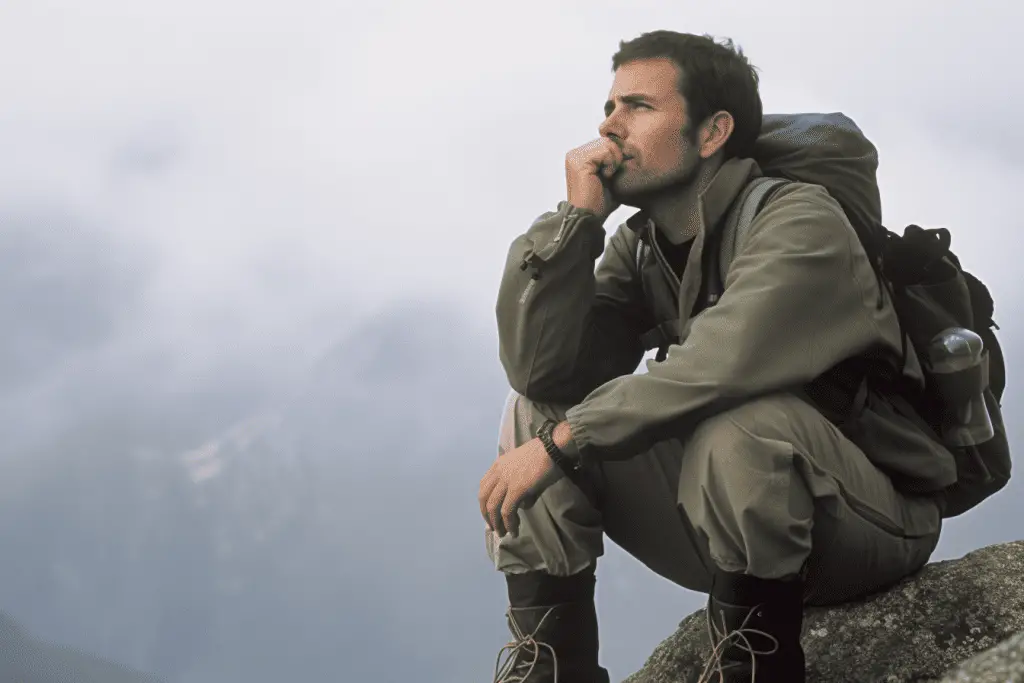When we hit the trails, it’s essential to arm ourselves with a wealth of hiking facts. Knowledge is power, and in this case, it can make the difference between a great day outdoors and a dangerous situation. This list of critical details isn’t meant to scare you away from your next adventure, but rather to prepare you for a safe and enjoyable experience.
Whether you’re a seasoned hiker or just starting, understanding these hiking realities can be life-saving. From acknowledging the power of moving water to knowing the international distress signal, each fact holds its own weight. With these insights in your backpack, you’re ready to tackle your next hike with confidence and care.

1. Hiking Dangers are Not Age Specific
Did you know the average age of hikers who die on public lands is 45? It’s a grim fact, but it shows that the wilderness doesn’t discriminate by age. It’s important for hikers of all ages to take precautions.
2. Many Hikers Drown Each Year
Believe it or not, one of the top killers for hikers is actually drowning. Crossing rivers and streams can be more dangerous than you think, and always demands utmost caution.
3. 6 Inches of Water Can Knock You Down
You may think a small stream is harmless, but as little as six inches of moving water can knock you off your feet. That’s why it’s essential to gauge the water’s speed and depth before crossing.
4. Altitude Sickness Can Begin at 5,000 Feet (1,500 meters)
If you’re hitting trails above 8,000 feet or 2,400 meters, watch out for altitude illness due to low oxygen levels. But keep in mind, altitude sickness can start causing trouble even as low as 5,000 feet or 1,500 meters.
5. Emergency Blankets Can Make You Colder
Emergency blankets can be a lifesaver, but be aware they’re prone to condensation. This could leave you damp and cold if you don’t manage it well.
6. Cotton Clothing Kills Hikers
Cotton clothing might seem comfortable, but it can lead to hypothermia when wet. It stays damp longer, causing your body to lose heat rapidly.
7. Ankle Injuries Are the Most Common Hiking Injury
Guess what the most common hiking injury is? Yep, it’s the ankle. Good footwear and being mindful of where you’re stepping can help prevent these mishaps.
8. Falling Is The Leading Hiking Injury
It’s not just steep cliffs you need to worry about, most hiker injuries actually come from falls on level ground. Always stay alert to avoid tripping or stumbling.
9. 1 Out of Every 3 Large Carnivore Attacks is Fatal
Here’s a scary fact: one in three large carnivore attacks on hikers ends in a fatality. It’s a reminder that respecting wildlife and keeping a safe distance is crucial.
10. Animal Attacks Are More Prevalent Among Solo Hikers
Most animal attacks happen to solo hikers. This reinforces the idea that hiking with a buddy isn’t just more fun, it’s also safer.
11. Over 2,000 Hikers Get Lost Each Year
Each year, over 2,000 hikers get lost. It’s a good reminder to always carry a map and compass, and know how to use them.
12. Universal Distress Signals Come in 3’s
If you’re ever in trouble, remember the universal distress signal is three of any signal. Three gunshots, whistle blasts, mirror flashes, or evenly spaced fires could save your life.
13. Forest Rangers Can Be Used Pre-emptively
A smart tip before you hit the trail is to let forest rangers know your hiking plans. If you don’t report back in time, they’ll know to check on you. It’s a simple step that can make a huge difference.
Putting It All Together: Hiking Facts Can Keep You Safe
Having reached the end of our hiking facts, it’s clear that staying safe on the trails requires knowledge, awareness, and preparedness. Each of these facts carries valuable lessons, whether it’s about the risks of cotton clothing or how solo hikers are more prone to animal attacks. Remember, understanding these realities is the first step in mitigating them.
In conclusion, these hiking facts aren’t meant to dampen your enthusiasm but to equip you for safe adventures. Remember to respect nature’s power, plan ahead, and always stay alert. Armed with these insights, you can confidently face the challenges that may come your way, turning potential perils into manageable situations.
